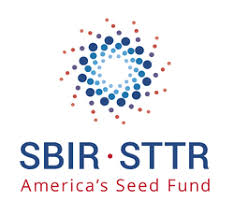- Solutions
- Partners
- Resources
- Blog
- GovCon Source
- GovCon Source Home
- Lean & Agile in the Age of DOGE
- Service Contract Act (SCA)
- DCAA Compliant Accounting
- GovCon Outsourcing & Managed Services
- Government ERP Systems
- Veteran-Owned Small Businesses
- GovCon CyberSecurity
- Graduating 8(a) Program
- SBIRs & Grants
- GovCon Growth Strategies
- GovCon Compliance Audits
- Webinars
- DCAA Compliance
- GovCon Accounting
- Graduating 8(a) Program
- Service Contract Act (SCA)
- GovCon Managed Services
- Government ERP Systems
- GovCon Reviews & Audits
- Cybersecurity Compliance
- Government Grants & Contracts
- Company
Self-Assessment Checklist
Answer a few questions to see if you are correctly and efficiently handling your SBIR grants and contracts.
 Page Summary
Page Summary
After completing SBIR Phase II, small businesses can pursue various funding options for commercialization, including SBIR Phase III, STTR Program, government contracts, venture capital, corporate partnerships, and grants, requiring tailored strategies based on industry and goals. Networking and past SBIR success enhance future funding prospects.
 Yes, there are opportunities for additional funding beyond the SBIR (Small Business Innovation Research) Phase II. The SBIR program is a competitive program that provides funding to small businesses to conduct research and development (R&D) projects with the potential for commercialization.
Yes, there are opportunities for additional funding beyond the SBIR (Small Business Innovation Research) Phase II. The SBIR program is a competitive program that provides funding to small businesses to conduct research and development (R&D) projects with the potential for commercialization.
Additional Funding Beyond SBIR Phase II
-
SBIR Phase III
Although Phase II is typically the last phase of the SBIR program, it's important to note that Phase III is not a funding phase but rather a commercialization phase. During Phase III, small businesses are expected to pursue commercialization opportunities with non-SBIR funding sources, such as government contracts or private sector investments. This phase allows you to leverage your SBIR-funded research to secure additional funding for commercialization. -
Small Business Technology Transfer (STTR) Program
Similar to the SBIR program, the STTR program also provides funding to small businesses, but it requires collaboration with a research institution (e.g., a university or nonprofit research organization). After completing STTR Phase II, you can pursue additional funding opportunities for commercialization, similar to SBIR Phase III. -
Federal and State Grants
Beyond the SBIR and STTR programs, there are various federal and state grant programs that provide funding for R&D and commercialization efforts. These programs may be specific to certain industries or technologies, so it's essential to research and identify relevant opportunities. -
Venture Capital and Angel Investors
Many small businesses seek venture capital (VC) or angel investor funding to scale their operations and bring their products or services to market. These investors often look for promising startups with growth potential. Having a successful SBIR Phase II project can make your business more attractive to investors. -
Corporate Partnerships and Licensing
Collaborating with established companies through partnerships or licensing agreements can provide funding and resources for commercialization. Large corporations may be interested in your technology and willing to invest or partner with your small business. -
Government Contracts and Procurement
Beyond Phase III, your small business can pursue government contracts and procurement opportunities with various federal agencies. These contracts can provide substantial funding for the continued development and deployment of your technology. -
Grants and Competitions
 Keep an eye out for grants and competitions offered by organizations, foundations, and industry associations related to your field. These can provide funding, exposure, and networking opportunities.
Keep an eye out for grants and competitions offered by organizations, foundations, and industry associations related to your field. These can provide funding, exposure, and networking opportunities. -
SBIR/STTR Fast-Track and Direct-to-Phase II
Some agencies offer Fast-Track or Direct-to-Phase II options, which can streamline the process and potentially provide quicker access to Phase III or additional funding opportunities. -
Private Sector Partnerships
Partnering with private companies in your industry can lead to joint R&D projects, licensing agreements, or investment opportunities. -
SBIR/STTR Success Stories
Building a successful track record with SBIR/STTR awards can make your business more competitive for future funding opportunities within and outside of the program.
It's essential to research and strategically plan your funding approach beyond SBIR Phase II, considering your specific industry, technology, and commercialization goals. Each funding source may have its own eligibility criteria and application process, so be prepared to tailor your approach to fit the requirements of potential funding opportunities.
Additionally, networking and building relationships within your industry can be valuable for identifying and accessing funding sources.
What Are the Reporting Requirements for SBIR Grants?
How Can I Commercialize Technology Developed with SBIR Grants?
Other posts you might be interested in
View All Posts
12 min read
| October 15, 2025
AtWork & Paychex: Simplifying Business Operations Together
Read More
5 min read
| August 5, 2025
Now Is the Time to Replace QuickBooks, Unanet, and Deltek
Read More
4 min read
| August 4, 2025
